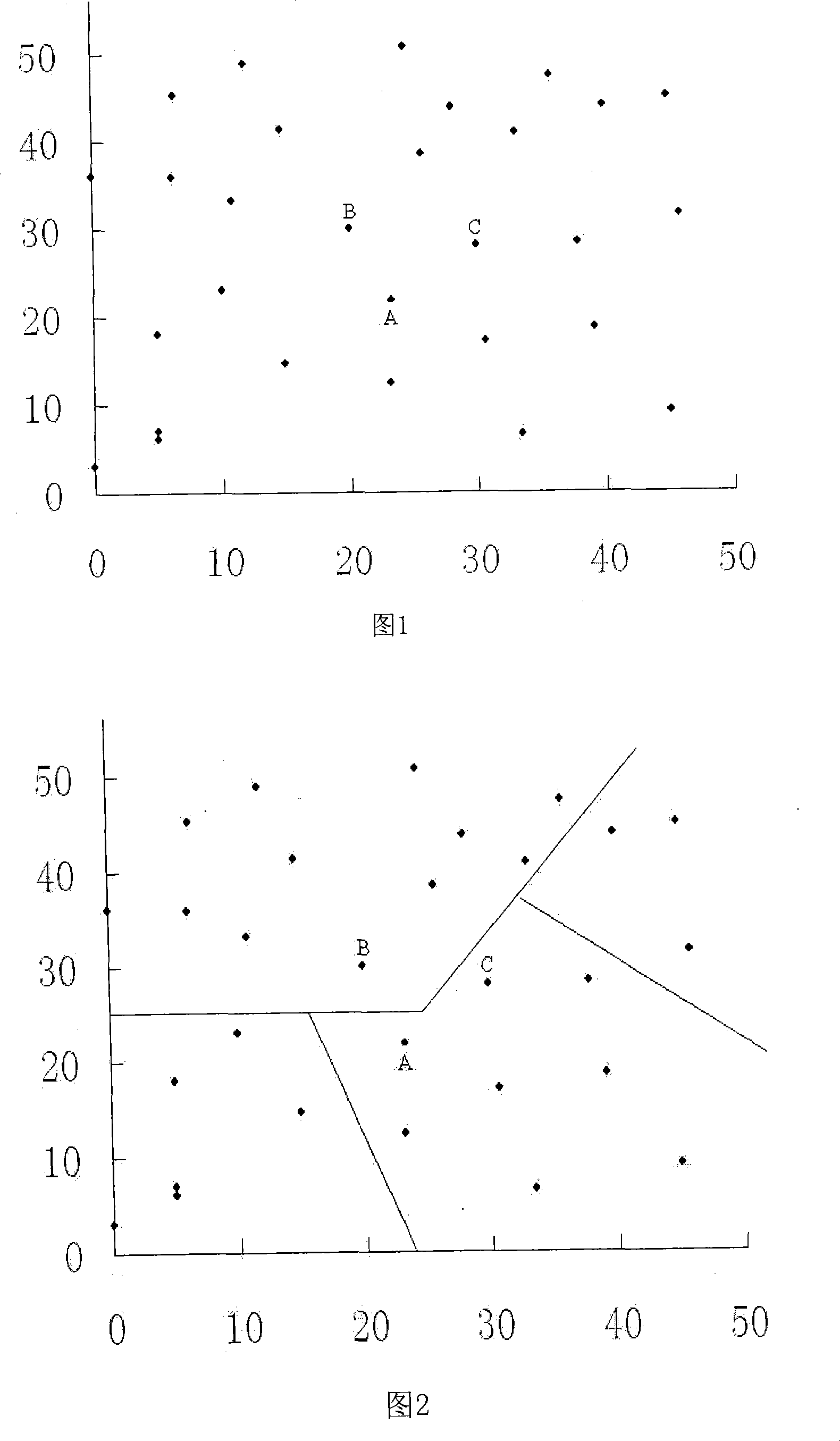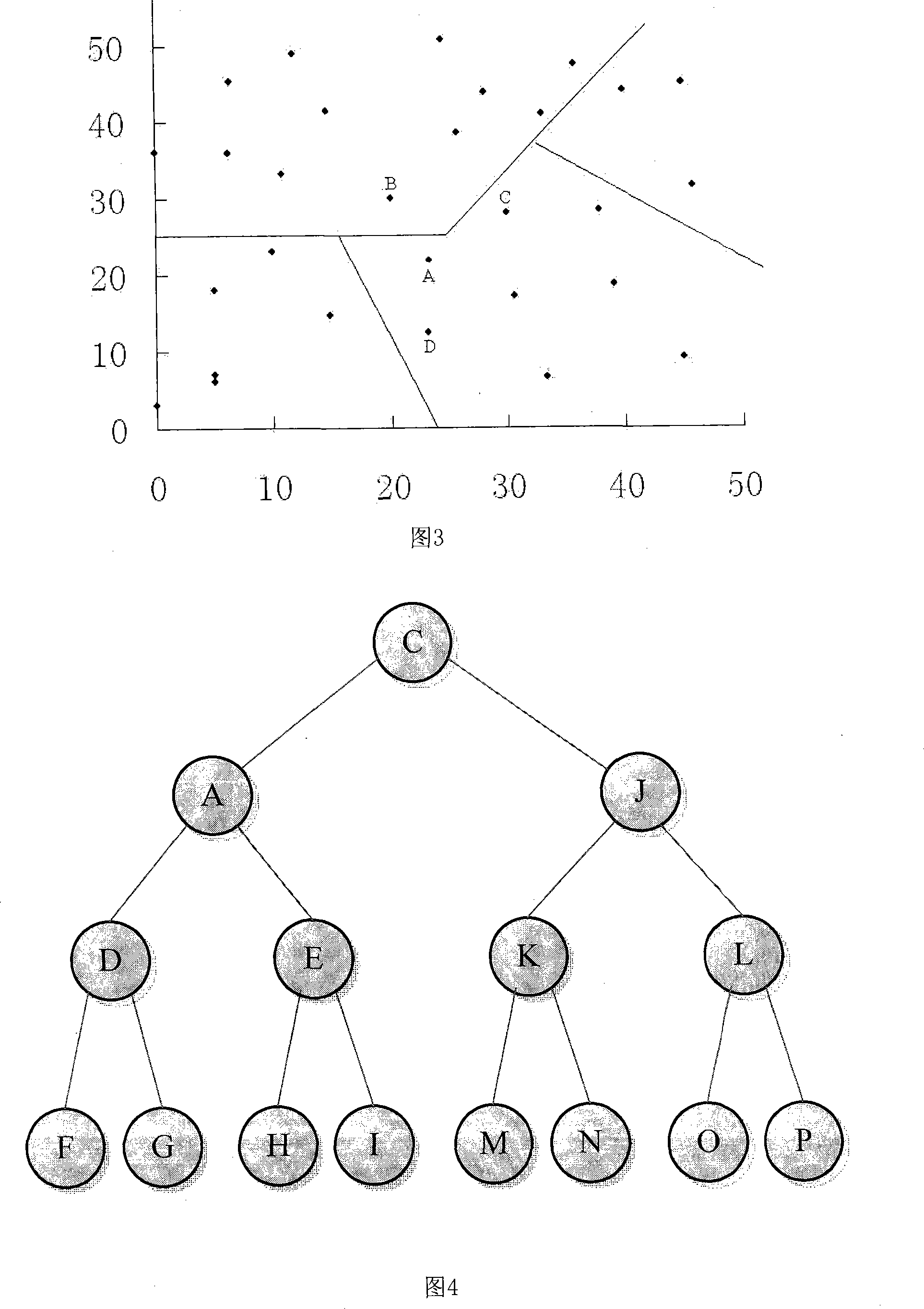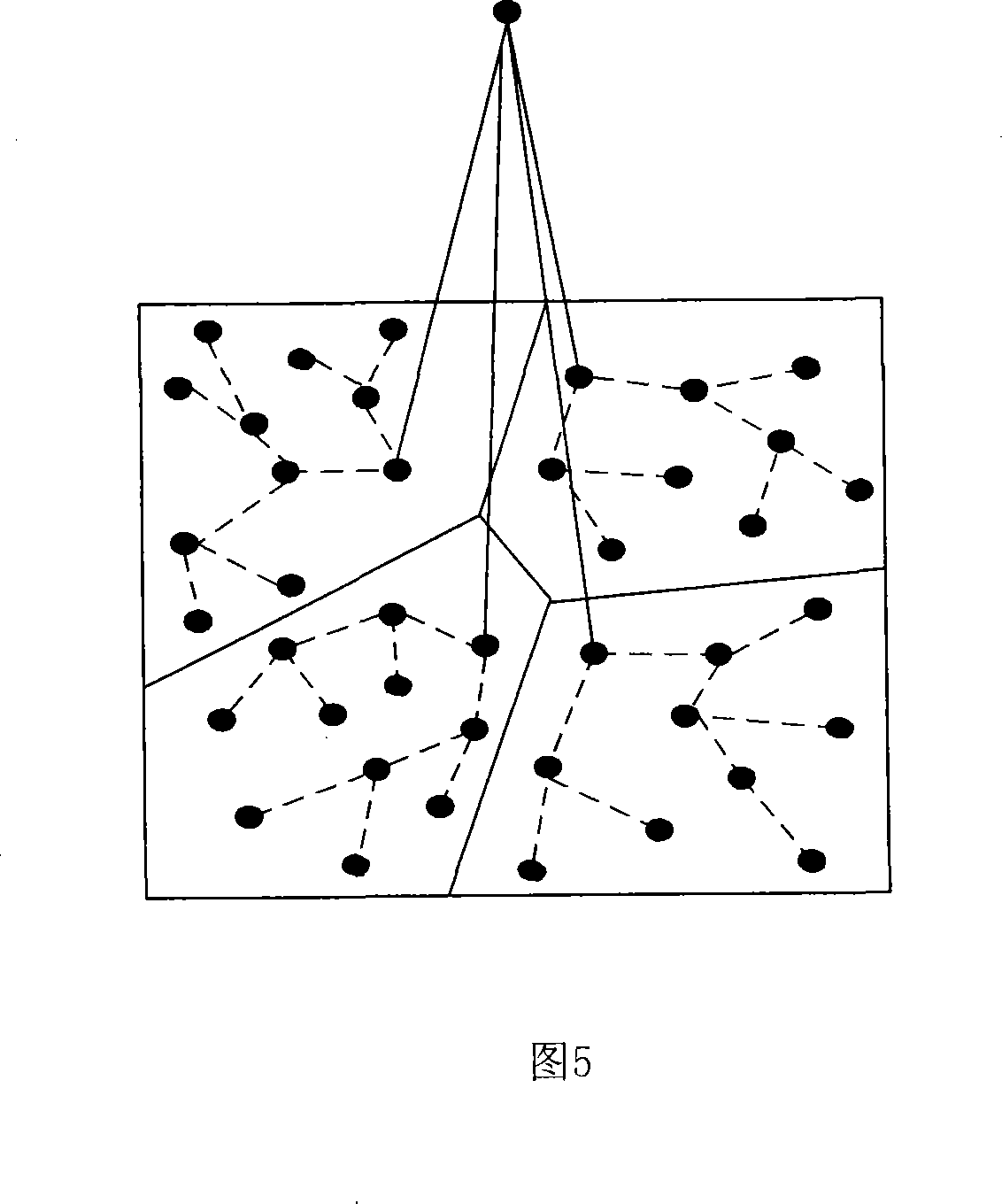Method for identifying the section energy balance route of wireless sensor network based on 2-child tree
A wireless sensor and energy balancing technology, applied in wireless communication, data exchange network, transmission system, etc., can solve problems such as uneven distribution of cluster heads, exhaustion of energy, energy exhaustion of nodes, etc., to reduce the burden of energy consumption, The effect of reducing energy consumption and balancing energy consumption
- Summary
- Abstract
- Description
- Claims
- Application Information
AI Technical Summary
Problems solved by technology
Method used
Image
Examples
Embodiment Construction
[0027] A preferred implementation example of the present invention is described in detail as follows in conjunction with accompanying drawing:
[0028] In this embodiment, the energy-balanced route determination method of wireless sensor network clustering based on the binary tree when selecting the route realizes the effective reduction and balance of the energy consumption of the network system and prolongs the lifetime of the entire network.
[0029] First, the entire network system meets the following assumptions:
[0030] (1) Each node has a unique label (unique ID), and the initial energy is the same.
[0031] (2) Each node has the same wireless coverage radius and is a symmetric channel. The radio signal consumes exactly the same energy in all directions and uses a first-order radio mode.
[0032] The specific method of establishing a route is as follows:
[0033] (1) In one of the stages of cluster formation, each node is in a waiting state first, and generates a rand...
PUM
 Login to View More
Login to View More Abstract
Description
Claims
Application Information
 Login to View More
Login to View More - R&D
- Intellectual Property
- Life Sciences
- Materials
- Tech Scout
- Unparalleled Data Quality
- Higher Quality Content
- 60% Fewer Hallucinations
Browse by: Latest US Patents, China's latest patents, Technical Efficacy Thesaurus, Application Domain, Technology Topic, Popular Technical Reports.
© 2025 PatSnap. All rights reserved.Legal|Privacy policy|Modern Slavery Act Transparency Statement|Sitemap|About US| Contact US: help@patsnap.com



